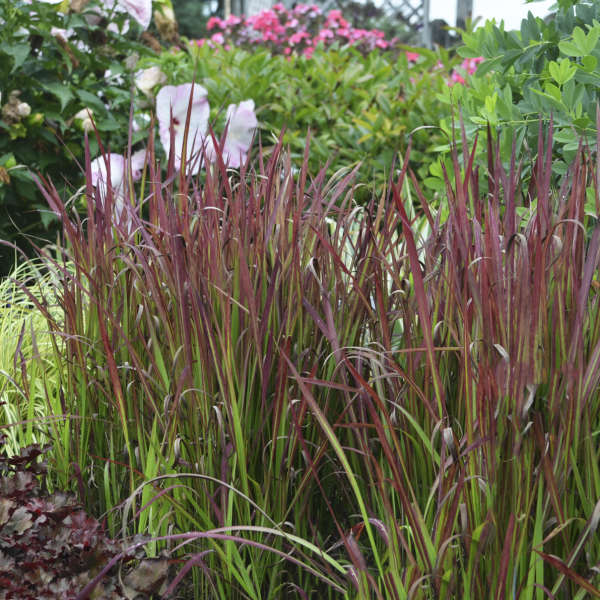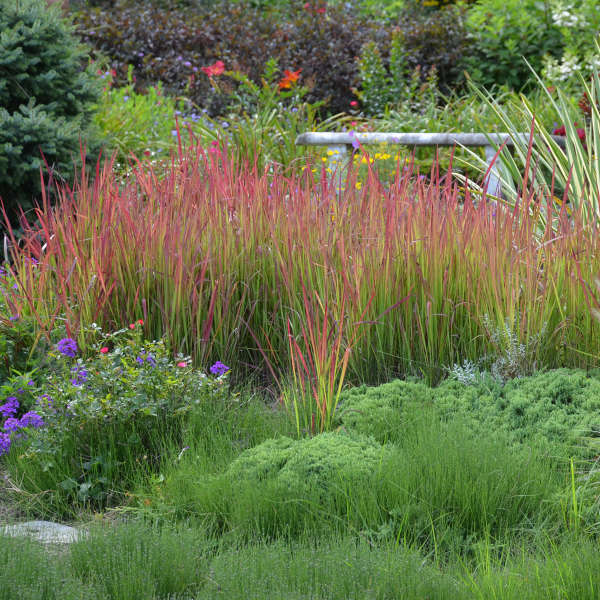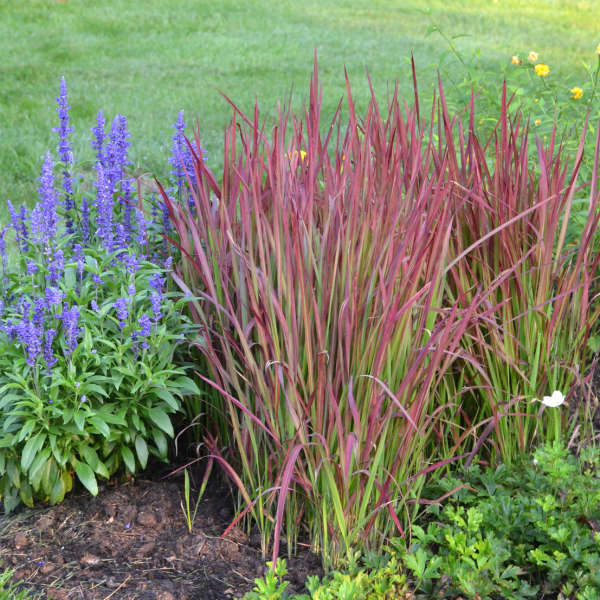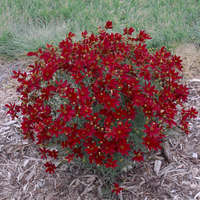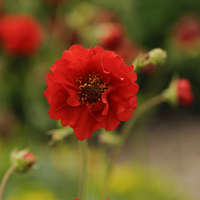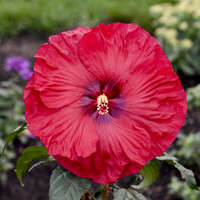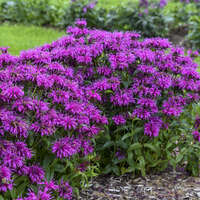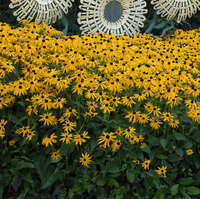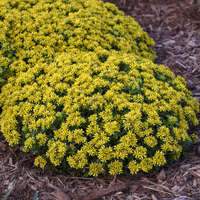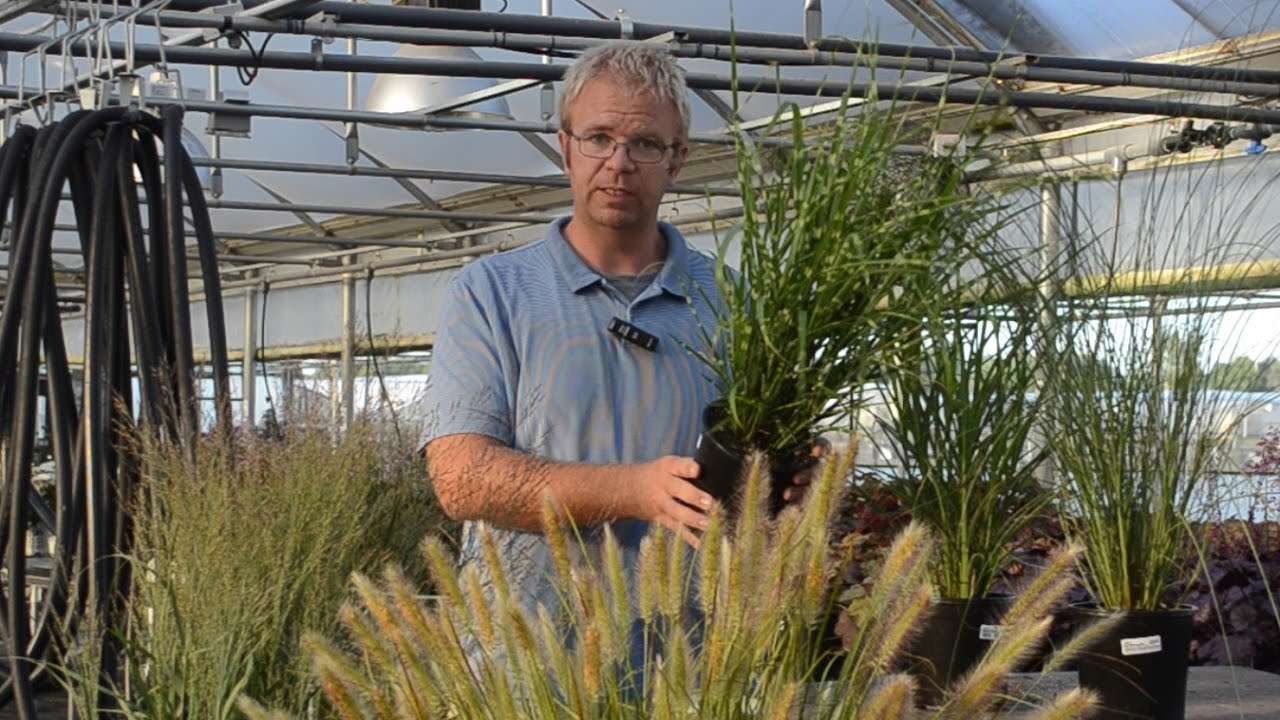Imperata cylindrica 'Red Baron'
Common Name: Japanese Blood Grass, Cogon Grass, Ornamental Grass
Japanese Blood Grass forms an upright clump of green leaves with striking blood red tips. As the season progresses, the foliage becomes more and more red, glowing nearly all-red in the fall. This grass rarely flowers.
Standing under two feet tall, it is best used as a filler in sunny borders or as a thriller in combination containers. This grass spreads slowly by underground runners and is typically not invasive in northern and eastern climates. It spreads more quickly in the southern and southeastern US and care should be taken to contain its growth in those regions.
